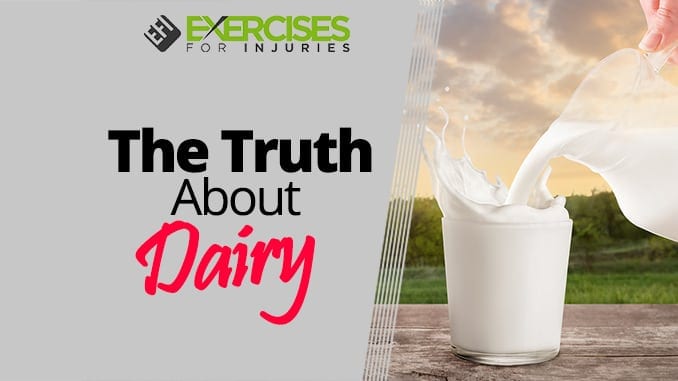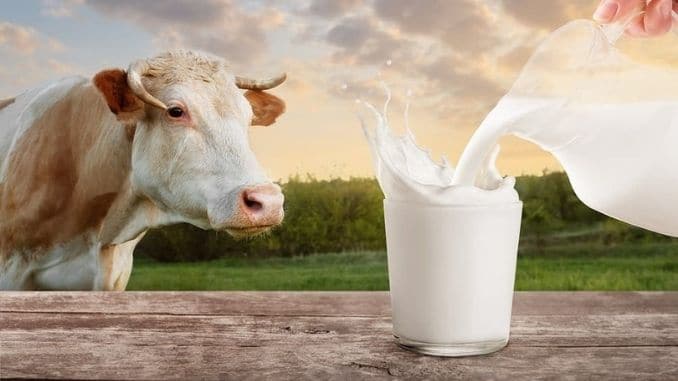
For years, parents have told kids to “drink your milk,” and milk was synonymous with good health. How could milk possibly be bad for you? Times may have changed, but facts about dairy have been described for thousands of years.
In this article, we’ll look at some different issues surrounding facts about dairy products including lactose intolerance (milk intolerance) and milk allergy. Plus, we’ll examine the heated debate surrounding pasteurized milk vs. raw milk. We’ll even give goat’s milk a try.
Hippocrates Diagnosed Milk Allergy
Animal milk was incorporated into the human diet about 9000 years ago. Then, 2000 years ago, Hippocrates (known as the “Father of Medicine”) described problems with a person after drinking milk. He noted that the person developed a skin rash and upset stomach.
Since then, many have promoted the benefits of a dairy-free diet. They claim that avoiding milk is good for your intestines, skin and respiratory system and may even help prevent cancer.
What Is Lactose Intolerance?
The Facts About Dairy include lactose intolerance and milk allergy. It is believed to have been common in ancient times, causing symptoms like diarrhea, nausea, and abdominal cramps. It’s believed that, in ancient times, pretty much everyone was lactose-intolerant. This meant that when they ingested dairy products, they developed symptoms like:
- Diarrhea
- Nausea
- Vomiting
- Abdominal cramps
- Bloating
- Gas and flatulence
The symptoms typically occur 30 minutes to 2 hours after consuming a dairy food. In time, as cows became more domesticated, people began to lose their lactose intolerance. Why? The theory is that by living near animals, human bodies eventually develop lactase-production capabilities. Lactase is an enzyme produced in the small intestine that allows you to digest milk.
Lactase breaks down milk sugar into components that are easily absorbed like glucose and galactose. If you don’t have lactose, the sugar remains in the intestines and causes symptoms. Typically, lactose intolerance occurs as you age. Since most adults drink less milk, their bodies may begin to shut down lactase production.
What Is Milk Allergy?
Facts about dairy also include Milk allergy is one of the most common food allergies, especially in children. Within minutes to hours after drinking milk, symptoms appear. Symptoms may include:
- Wheezing or coughing
- Vomiting
- Hives
- Diarrhea
- Stomach cramps
- Itchy rash
- Runny nose and watery eyes
Milk allergy is different than lactose intolerance in that it involves an abnormal immune system response. Casein and whey are milk proteins that can cause a reaction in your body that leads to the production of immunoglobulin E (IgE) antibodies. If this reaction is strong enough, it can lead to a life-threatening condition called anaphylaxis. Symptoms of anaphylaxis may include airway constriction, swollen throat, breathing difficulty, facial swelling, itching and shock.
If someone goes into anaphylactic shock or airway obstruction, it’s a medical emergency. Treatment requires an injection of epinephrine right away. Still, most cases of milk allergy are mild, and the majority of children eventually outgrow it. If not, there are dairy-free milk alternatives to try.
How Does Pasteurization Affect Milk?
Pasteurization has been around since Louis Pasteur developed the process in 1864. It involves heating up milk to 161 degrees Fahrenheit for 15 seconds, and then it’s cooled down quickly. Facts about dairy suggest that Pasteurization decreases the amount of bacteria in milk. This is different than sterilization, which eliminates all bacteria. Pasteurization reportedly prevents diseases like tuberculosis, brucellosis, diphtheria, scarlet fever and Q-fever. The process also kills many harmful bacteria that may play a role in food poisoning.
The reason pasteurization became so popular is that the distance from cow to consumer grew longer as urbanization spread. This meant that milk would spoil more frequently, so pasteurization was implemented to keep milk fresh longer. Ironically, a large part of the raw vs. pasteurized milk debate revolves around this issue. We’ll explore more about this point later.
What Is Raw Milk?
Raw milk is milk that has never been cooked — that is, never pasteurized. Proponents of raw milk claim that it can help make your skin healthier and prevent allergies. They also state that raw milk has a much higher nutritional value than pasteurized milk. For instance, those who promote raw milk consumption say that it has much higher levels of:
- Vitamin B
- Vitamin C
- Iron
- Calcium
- Antioxidants
Some studies reportedly find pasteurization can reduce the nutritional value of milk by 50 percent. Others claim that raw milk does not cause as much lactose intolerance symptoms, either.
The Counter Argument
If you visit the Centers for Disease Control and Prevention (CDC) website, it states clearly that Facts About Dairy shows raw milk has no nutritional advantage over pasteurized milk. Interestingly, the CDC offers odd statistics to back up their claim that raw milk is dangerous. The site says, “According to an analysis by the Centers for Disease Control and Prevention (CDC), between 1993 and 2006 more than 1500 people in the United States became sick from drinking raw milk or eating cheese made from raw milk.”
That’s about 115 people per year that got sick from raw milk. However, the CDC also states that each year 48 million people get sick from a foodborne illness, 128,000 are hospitalized and 3,000 die. So, the 115 people per year that get sick from raw milk doesn’t seem like that high of a number. Plus, problems could be from human contamination rather than problems with the milk itself.
Conflicts of Interest
Both sides of the debate point fingers at the other saying financial interests distort the arguments. One thing’s for sure — nobody is giving milk away for free. Still, it’s clear that the conventional milk industry has deep pockets that could be used to influence opinions.
If we return to the main reason pasteurization was implemented, we recall that time from cow to consumer was a major factor. When milk first comes out of the cow, it shouldn’t be contaminated unless the cow is sick. Modern-day services can bring raw milk to your home very quickly and, if consumed within a reasonable period of time — about one week — the risk of illness is low.
This debate is ongoing, and both sides are digging in their heels. However, based on the data available today, drinking raw milk from a reliable source doesn’t appear to have a greater health risk than other foods.
How Raw Milk Might Reduce Allergies and Intolerance
The conventional thinking is that milk is a source — not a cure — for allergies. One explanation for a benefit though might be the probiotics found in raw milk. Probiotics are living organisms that provide you with health benefits such as improved immune function. Plus, enzymes found in raw milk may be helpful for digestion. Remember, during pasteurization, many milk nutrients are believed to be destroyed. Lactose intolerance, therefore, may be due to missing milk enzymes that could help digest the milk.
How Do I Get Raw Milk?
Regulations vary from state to state, but you may find a local farm that sells you raw milk. You can also find a wide range of online merchants. One thing to keep in mind is that the cost is higher than what you pay for pasteurized milk at your local grocery store. Still, the potential health benefits might be worth it.
Don’t forget to consider raw cheeses as well. These can come from cow or other animal sources like goats or sheep.
What About Goat’s Milk?
What does goat’s milk taste like? Well, it’s hard to describe, but most say it’s creamy, a bit sweet and mild tasting. Many consider the taste very similar to cow’s milk. The difference is that raw goat’s milk is even healthier than raw cow’s milk. Here are some advantages to goat’s milk:
- Easier to digest as the fat globules in goat’s milk are smaller allowing for easier absorption
- Less-allergenic proteins like goat’s milk reportedly have less of a chance of causing an allergic reaction; goat’s milk is more similar to human breast milk than any other type of milk
- High in calcium and helpful medium-chain fatty acids
- Rich in vitamin A which may help your skin
Just like raw cow’s milk, goat’s milk is more expensive than standard cow’s milk. One option might be to go with raw milk for the majority of your milk consumption and supplement it with goat’s milk every once in a while.
More Humane?
Another factor that enters into the raw vs. processed milk debate involves the treatment of animals. Those who support raw milk initiatives state that the animals that produce raw milk are treated better, eat natural grass and are allowed to roam free. We should keep in mind though that just because milk is sold as “raw” doesn’t guarantee that the cows are kept in better conditions. Again, if you can visit the farm to see for yourself, that’s probably your best option.
Health Requires Effort
Good health doesn’t come easy. Besides a balanced diet and regular exercise, it pays to educate yourself and stay on top of important issues. The milk debate is one area to keep an eye on. Hopefully, continued research and debate will lead to improved understanding and better health for all milk drinkers.
If you want to know what foods will help you restore your natural vitality and get slim and stay slim, then check out the Best Foods That Rapidly Slim & Heal in 7 Days program, here!




